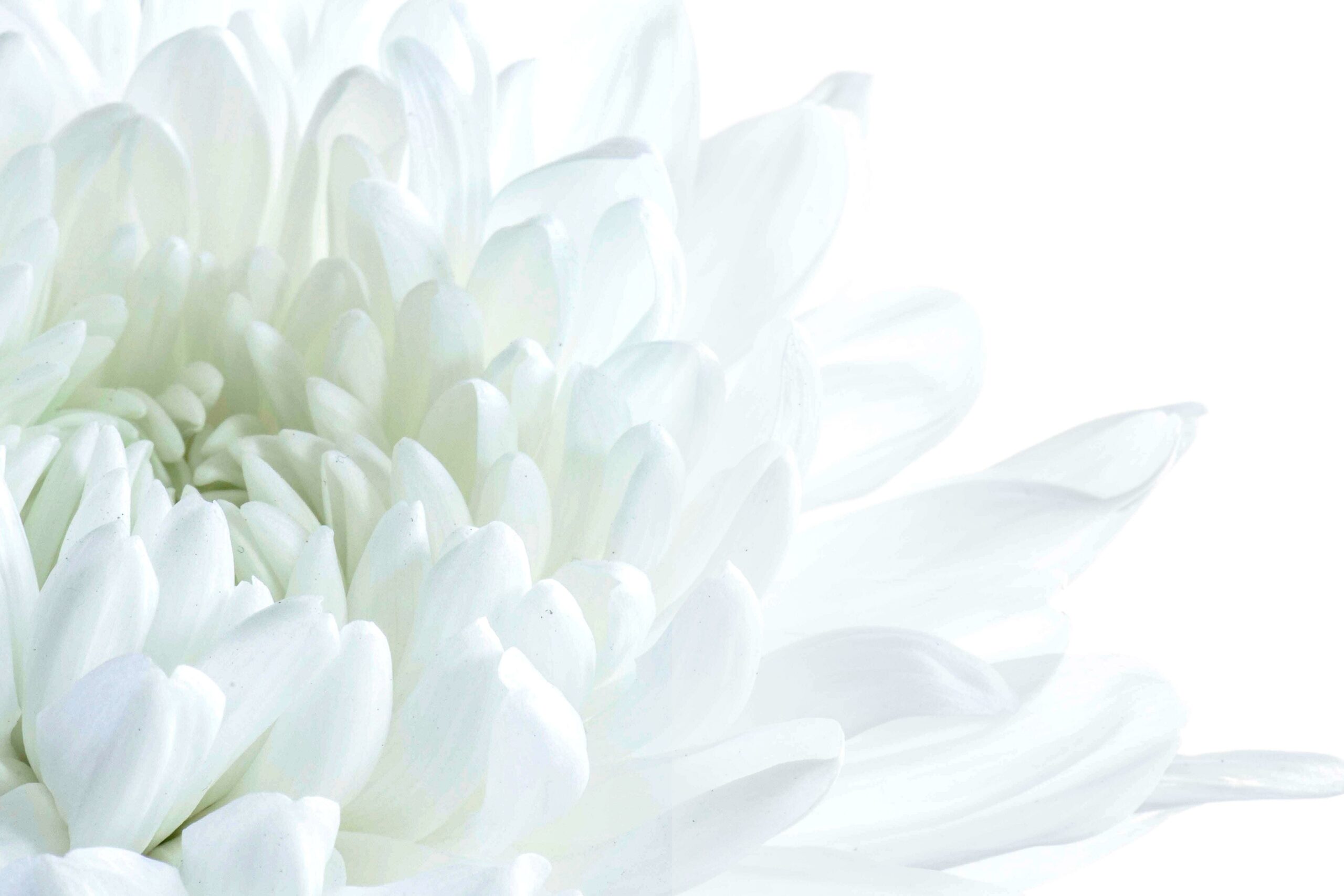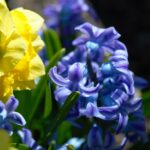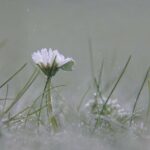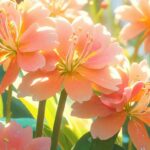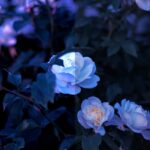Are you ready to embark on a journey filled with enchanting floral discoveries? In this article, we will delve into the captivating world of flowers, exploring both their romantic allure and scientific wonders. From uncovering the hidden meanings behind beloved blossoms to unraveling the intricate details of their botanical structures, join me as we unveil a wealth of fascinating facts about these natural marvels. Whether you are a hopeless romantic or a curious scientist, prepare to be captivated by the remarkable stories and scientific insights that lie within the petals of these beautiful blooms.
Facts about Flowers
Flowers, the beautiful and intricately designed reproductive parts of flowering plants, have fascinated humans for centuries. These enchanting creations come in a myriad of shapes, colors, and sizes, each with its own unique story to tell. Let’s delve into the captivating world of flowers and uncover some fascinating facts!
Did you know that some flowers, like tulips, crocuses, hibiscus, and poppies, have the extraordinary ability to close at night? It’s as if they are gracefully bidding farewell to the day and resting until the sun rises again. On the other hand, cacti, known as night-blooming cereus, mysteriously bloom all at once during the night. Imagine a desert landscape suddenly transforming into a breathtaking wonderland under the cover of darkness. How do these desert beauties synchronize their blooming? It remains a captivating floral mystery.
When it comes to color, nature has bestowed some interesting limitations on flowers. There are no natural white flowers, as white pigments are absent in the world of flowers. Similarly, there is no black pigment in the floral kingdom. Instead, black-colored flowers typically appear deep purple or maroon. It’s as if nature wants to remind us that true black and white are concepts exclusive to our human perception.
Prepare to be amazed by the largest flower in the world – the Rafflesia arnoldii, or “corpse flower.” This bloom can grow over 3 feet across and weigh over 15 pounds! But the astonishing size is not its only claim to fame; the Rafflesia arnoldii emits a putrid odor resembling rotting meat. These extraordinary traits are believed to attract carrion flies for effective pollination. It’s truly a world of wonders when size and scent combine in such a captivating way.
Flowers have long been associated with profound emotions and sentimentality. They are often exchanged as presents to symbolize love, fidelity, and empathy. Imagine the power of a single bloom to convey feelings that words often struggle to express. Flowers have become an exquisite language of their own, allowing hearts to speak through petals and fragrances. It’s a reminder that sometimes the most beautiful messages can be conveyed without uttering a single word.
The floral world is vast, with over 400,000 known flowering plant species. However, this number is likely to increase as undiscovered species await their grand introduction. From ancient rainforests to hidden valleys, countless floral treasures are patiently waiting for botanists and explorers to unveil their secrets. Each new discovery adds to the tapestry of botanical diversity, reminding us of the endless wonders that nature has in store for us.
In this magnificent world of flowers, even the tiniest bloom can captivate our attention. The smallest flower in the world belongs to the Wolffia globosa, commonly known as duckweed. This minuscule wonder measures only 0.6 millimeters in diameter, making it almost invisible to the naked eye. Yet, its delicate presence signifies the beauty and resilience found even in the most unassuming packages.
One intriguing fact about certain flowers is their unpredictable blooming patterns. Take bamboo, for example. This unique flowering plant only blooms every few years, making its blossoming a highly anticipated event. It’s as if the bamboo chooses the perfect moment to reveal its secret, reminding us that nature has its own sense of timing and rhythm.
The color of hydrangea flowers is one that can vary depending on soil type. Acidic soil tends to produce blue flowers, while alkaline soil yields pink blooms. It’s as if the soil acts as a magician, transforming petals into a kaleidoscope of hues. So, the next time you admire a hydrangea, remember that beneath its charming exterior lies a subtle chemical dance between flower and earth.
Some flowers not only display captivating colors and shapes but also possess unique fragrances. Take the chocolate cosmos, for instance. This enchanting flower emits an aroma reminiscent of rich chocolate, tantalizing our senses and inviting us to inhale its delightful bouquet. It’s as if nature has conspired to surprise us at every turn, hiding aromatic treasures within its floral creations.
But why do flowers go to such lengths to captivate us with their beauty, scents, and colors? The answer lies in their role as ambassadors of reproduction. Flowers play an essential part in the reproductive cycle of angiosperms, or flowering plants. Through the process of pollination, they enable the transfer of pollen from male structures to female structures, ensuring the continuation of plant life. They are the enigmatic matchmakers working silently to ensure the perpetuation of their species.
In this dance of reproduction, some flowers have formed unique partnerships with bees. They only release their sweet nectar when bees are present, providing the insects with a valuable food source while facilitating pollination. It’s as if flowers have developed a secret code, allowing only a select few to enter and partake in their nectarous treasures. This special bond between flowers and bees highlights the intricate web of interdependence that exists within the natural world.
From ancient myths to modern romances, flowers have ignited the imagination and stirred the emotions of people worldwide. The delicate petals and vibrant hues evoke a sense of wonder and leave an indelible mark on our hearts. They remind us that nature has an unparalleled ability to create beauty that transcends language and cultural barriers.
So, the next time you come across a flower, take a moment to appreciate the fascinating story it holds. Within its petals lies a rich tapestry of biological wonders, cultural symbolism, and ecological importance. Flowers are nature’s storytellers, inviting us to unravel their mysteries and embrace the enchantment they bring to our lives.
“Flowers are the music of the ground. From earth’s lips, spoken without sound.” – Edwin Curran
Facts About Flowers
Did you know that flowers can be more than just beautiful decorations? We’ve compiled a list of fascinating facts about flowers for you to explore. From romantic anecdotes to intriguing trivia, these flower-related tidbits are sure to captivate your interest.
If you’re feeling lovey-dovey, delve into the world of Romantic Facts About Flowers. Discover the hidden meanings behind different blooms and how they have symbolized love and romance throughout history. Click here to uncover these enchanting secrets: Romantic Facts About Flowers.
For those who crave knowledge and enjoy expanding their horizons, we have the perfect link for you. Explore 10 Interesting Facts About Flowers that you probably didn’t know. From bizarre botanical adaptations to mind-blowing statistics, this collection of flower facts will leave you astounded. Click here to embark on this fascinating journey: 10 Interesting Facts About Flowers.
Looking to engage your little ones in learning? Our Facts About Flowers For Kids will do just that! From colorful illustrations to fun-filled descriptions, this section is tailored to pique the curiosity of young minds. Click here to spark their interest in the world of flora: Facts About Flowers For Kids.
Prepare yourself for a thrilling experience as we uncover the shadowy side of flowers. If you’re intrigued by the macabre, our Scary Facts About Flowers will send shivers down your spine. From poisonous plants to floral predators, this dark corner of the botanical world will give you an adrenaline rush. Click here if you dare: Scary Facts About Flowers.
Need a quick dose of flower trivia? Look no further than our compilation of 5 Facts About Flowers. This concise list will provide you with intriguing information that you can share with friends and family. Click here to expand your knowledge: 5 Facts About Flowers.
Ready to dive deeper into the wonders of the floral kingdom? Discover Nine Facts About Flowers that will leave you in awe of nature’s ingenuity. From extraordinary adaptations to mind-bending scientific discoveries, this collection will empower you with fascinating insights. Click here to embark on this educational journey: Nine Facts About Flowers.
Last but not least, for the avid flower enthusiasts seeking to quench their thirst for knowledge, we present 100 Facts About Flowers. A comprehensive compilation that will take you on a voyage through the rich diversity and captivating stories of hundreds of flowers. Click here to immerse yourself in this floral smorgasbord: 100 Facts About Flowers.
So, whether you seek romance, curiosity, or an adrenaline rush, click the links provided and unlock the hidden wonders of the floral world. Enjoy your exploration!
Romantic Facts About Flowers
Flowers, as the official reproductive parts of plants, have captivated humans for centuries with their beauty and intricate biology. From their fascinating origins to their symbolic meanings, there is a wealth of romantic facts to discover about these enchanting blooms. Let’s embark on a journey through the whimsical world of flowers and uncover some of the most intriguing romantic facts that will surely captivate your heart!
Love and Romance Blossoming Through Flowers
Certain flowers are synonymous with love and romance, none more so than the iconic red rose. The red rose has long been associated with passion and desire, thanks to its deep crimson hues and velvety petals. Interestingly, ancient Greeks believed that roses were created by the goddess of love herself, Aphrodite, further solidifying their romantic significance. So, the next time you gift someone a bouquet of red roses, you’re not just conveying your affection but also paying homage to a centuries-old symbol of love.
“The red rose’s association with love and desire dates back to Greek mythology, where it was believed to be a creation of the goddess of love, Aphrodite.”
Bewitchingly Beautiful and Breathtakingly Big
While red roses exude romance, the world of flowers boasts enchanting specimens that are both bewitchingly beautiful and breathtakingly big. The smallest flower known to us is the Wolffia globosa, which measures a mere 0.6 millimeters in diameter—a true testament to the delicate splendor that nature can produce. On the other end of the size spectrum, we have the Rafflesia arnoldii, also known as the “corpse flower.” As the largest flower in the world, this tropical wonder can reach a whopping one meter in diameter. Though it emits a putrid odor to attract pollinators, its unique appearance and grandeur make it a true marvel to behold.
“Nature’s treasures come in various sizes, from the minute beauty of the Wolffia globosa flower, smaller than a pinprick, to the magnificent Rafflesia arnoldii, whose enormous blossom can span up to a meter in diameter.”
Flowers that Bloomed Fortunes
Did you know that during the 17th century in Holland, tulip bulbs were worth more than gold? Tulips, with their vibrant colors and graceful forms, took the world by storm in what became known as “tulipomania.” These coveted flowers became a valuable form of currency, and their popularity reached such heights that the tulip market eventually crashed, leaving many bankrupt. This intriguing historical fact showcases the power and allure that flowers have held throughout time, not only as objects of beauty but as emblems of wealth and economic significance.
“In the 17th-century, tulip bulbs were so highly valued that they were used as currency—a fascinating testament to the intoxicating allure of these enchanting flowers during the time of ‘tulipomania’.”
Flowers: More than Mere Aesthetics
As we delve deeper into the realm of flowers, we uncover their extensive uses beyond aesthetics. Flowers have been revered and utilized by different cultures throughout history for various purposes, including medicine, folklore, cooking, and religious rituals. Take the lotus flower, for instance, which holds profound cultural and religious significance in many Eastern traditions. It is revered as a symbol of purity, enlightenment, and rebirth—a powerful tribute to the deeply rooted symbolism that flowers possess.
“Flowers have played diverse roles in different cultures, from the lotus flower, which symbolizes purity and rebirth in Eastern traditions, to the intricate intertwining of flowers with medicine, folklore, cooking, and religious practices.”
Sensory Delights and Therapeutic Properties
Flowers not only captivate our eyes but also offer an array of sensory delights. The scent of roses, for example, is associated with relaxation and often used in aromatherapy to promote calmness and reduce stress. Moreover, flowers hold therapeutic properties, and their essences are harnessed for various purposes. Aromatherapy harnesses the power of floral essences to induce relaxation, boost mood, and promote overall well-being. So, the next time you bury your nose in a bouquet or light a scented candle, remember that there’s more to flowers than meets the eye—they have the power to soothe our souls.
“The scent of roses, with its calming properties, is often employed in aromatherapy to promote relaxation and combat stress—an aromatic reminder of the therapeutic power flowers possess.”
Flowers are not simply objects of beauty; they are also keepers of intriguing stories and captivating facts. From their symbolic meanings to their historical significance, flowers have enchanted us for centuries with their elegance and allure. As we unravel the romantic facts about flowers, we find ourselves immersed in a world filled with love, beauty, and endless possibilities.
So, whether you’re gifting a bouquet to express your love, admiring the delicate petals of a tiny flower, or exploring the vibrant history of tulipomania, remember that flowers are nature’s gift to us—an enchanting reminder of the wonders that surround us and the depth of romance that can be found even in the most delicate of petals.
Scientific Facts About Flowers
Flowers, the magnificent reproductive organs of plants, have captivated humans for centuries with their diverse shapes, sizes, and colors. But did you know that flowers are not only visually appealing but also serve crucial ecological and botanical functions? Let’s delve into the fascinating world of flowers and uncover some intriguing scientific facts that will deepen your appreciation for these natural wonders.
First and foremost, flowers play a vital role in the life cycle of flowering plants. They are responsible for attracting pollinators, such as bees, butterflies, and birds, which help transfer pollen from the male stamens to the female pistils. This process leads to the formation of seeds, ensuring the continuation of plant species. So, next time you admire a beautiful bloom, remember that it is not just a pretty face; it is an essential player in the intricate web of nature’s reproductive processes.
To understand how flowers thrive, let’s talk photosynthesis. Like all plants, flowers rely on sunlight, water, and minerals in the soil to produce food. Thanks to tiny structures called chloroplasts, which contain the green pigment chlorophyll, flowers can harness the energy of the sun and convert it into nutrients through photosynthesis. This remarkable process provides not only sustenance for the plant but also contributes to the oxygen levels in the atmosphere, making flowers true eco-heroes.
But did you know that the morphology of a flower consists of more than just the reproductive parts? A flower’s structure also includes vegetative elements, such as petals, sepals, and bracts. These non-reproductive structures not only serve to protect the precious reproductive organs but also contribute to the flower’s visual appeal. Imagine a flower as a work of art, where every element has a purpose – a symphony of shapes, colors, and textures.
Now, let’s uncover some specific scientific facts about certain flower species that will leave you in awe. For instance, roses, often associated with love and romance, are the most popular flowers in the world. But did you know that tulips, another beloved flower, are close relatives of asparagus, onions, and garlic? Nature’s connections never cease to amaze!
Another intriguing fact is that the peony flower was named after Paeon, a student of Asclepius, the Greek god of medicine. Asclepius became jealous of Paeon’s skills and threatened to kill him, but Zeus saved Paeon by turning him into a beautiful flower – the peony. So, every time you admire a peony’s delicate petals, remember the ancient tale of its transformation from a human to a symbol of beauty.
Now, let’s explore some examples of the incredible diversity found in the world of flowers. Have you heard of the Wolffia globosa, also known as duckweed? This tiny plant boasts the title of the world’s smallest flower, measuring a mere 0.6 millimeters in diameter. On the other end of the spectrum, we have the majestic moonflower, which blooms only at night, adorning the darkness with its delicate white petals. These enchanting blooms remind us that nature’s wonders can be found even in the smallest or darkest corners.
Not all flowers conform to our expectations, though. Take bamboo, for example. While typically associated with towering green stalks, bamboo is a perennial flowering plant that blooms infrequently. This uniqueness adds an air of mystery and surprise to an already captivating plant.
Have you ever wondered why hydrangeas come in various colors? The answer lies in the acidity of the soil they grow in. Acidic soil produces flowers with blue hues, while alkaline soil yields pink or purple blooms. Nature’s color palette is more nuanced and complex than we often realize.
One flower that tantalizes our senses with its appearance and aroma is the chocolate cosmos. As its name suggests, this flower has a distinct reddish-brown hue and emits a delightful chocolate-like fragrance. Just imagine a bouquet of these flowers gracing your home, filling the space with beauty and a hint of sweetness.
Beyond their scientific marvels, flowers hold significant cultural and religious symbolism. Throughout history, flowers have been used in various civilizations to convey emotions, celebrate important events, and honor deities. The act of giving someone flowers has become a universal social amenity, carrying sentiments of love, gratitude, and friendship.
Flowers are not merely beautiful ornaments in our lives; they are essential players in the intricate tapestry of nature and the human experience. From their role in plant reproduction and their ability to create food through photosynthesis to their diverse and enchanting characteristics, flowers embody the wonders of the natural world. So, the next time you encounter a blooming botanical marvel, take a moment to appreciate the scientific facts that lie beneath its stunning exterior.
As botanist Luther Burbank once said, “Flowers always make people better, happier, and more helpful; they are sunshine, food, and medicine to the soul.” Let us cherish and celebrate these captivating floral creations that weave beauty and science into the fabric of our lives.
12 Fascinating Flower Facts
[youtube v=”Ub976UXEACY”]
Introduction
Flowers have always captivated us with their beauty and fragrance. In this article, we will explore twelve amazing facts about flowers that will leave you in awe of nature’s wonders.
1. The Vast Variety of Flowers
There are over 400,000 known varieties of flowers in the world, with more waiting to be discovered. Each one possesses its unique charm and characteristics, making the floral world a truly diverse and enchanting realm.
“Flowers are the music of the ground. From earth’s lips spoken without sound.” – Edwin Curran
2. Roses Reign Supreme
Roses are the best-selling cut flowers globally and are beloved for their romantic appeal. Interestingly, realtors suggest that homes adorned with roses are more likely to attract potential buyers, making them the go-to flower for adding charm to your home.
“A rose can never be a sunflower, and a sunflower can never be a rose. All flowers are beautiful in their own way and that’s like women too.” – Miranda Kerr
3. Keeping Cut Flowers Fresh
To maintain the freshness of cut flowers, adding a teaspoon of sugar and a few drops of vodka to the vase can work wonders. Changing the water every other day ensures that your flowers stay vibrant for a longer duration.
“Flowers always make people better, happier, and more helpful. They are sunshine, food, and medicine for the soul.” – Luther Burbank
4. Flowers on Mother’s Day
During Mother’s Day celebrations, 67.2% of those celebrating buy flowers for their mothers. In 2015, this amounted to a staggering $2.3 billion spent on expressing love and gratitude through blossoms.
“Mothers are like flowers. Each one beautiful and unique.” – Unknown
5. The Spectacular Keukenhof Gardens
Keukenhof Gardens in the Netherlands proudly showcases the mesmerizing beauty of 7 million tulips, daffodils, and hyacinths across 79 acres every April. It attracts around 800,000 visitors each year, who make the pilgrimage to witness this breathtaking floral extravaganza.
“The earth laughs in flowers.” – Ralph Waldo Emerson
6. Tulip Mania
In the 17th century, tulip bulbs were once so valuable that 12 acres of land were traded for a single bulb. This period, known as tulip mania, highlights the incredible allure and demand for these beautiful blooms.
“In joy or sadness, flowers are our constant friends.” – Okakura Kakuzo
7. Wedding Flower Expenditure
The average bride spends approximately $2,141 on wedding flowers. However, some larger-scale weddings, like Princess Kate’s, can substantially raise the average, with an astonishing $800,000 being spent on floral arrangements.
“Flowers are love’s truest language.” – Park Benjamin
8. Supermarket Flower Dominance
Supermarket chains are responsible for selling 50% of all flowers. This dominance makes it increasingly challenging to find small, independent flower shops.
“Don’t wait for someone to bring you flowers. Plant your own garden and decorate your own soul.” – Luther Burbank
9. Colombian Flower Imports
A whopping 75% of flowers bought in the United States are imported from Colombia, highlighting the significant role this South American country plays in meeting the demand for beautiful blooms.
“Happiness radiates like fragrance from a flower and draws all good things towards you.” – Maharishi Mahesh Yogi
10. California Blooms
Within the United States, 77% of domestically produced flowers come from California. The ideal climate and fertile soils of this state allow for the year-round cultivation of various floral varieties.
“If we could see the miracle of a single flower clearly, our whole life would change.” – Buddha
Conclusion
Flowers continue to astound and enchant us with their infinite beauty. Whether it’s the alluring aroma of roses or the vibrant colors of tulips, they have the power to evoke emotions and bring joy to our lives. From their diverse variety to their cultural significance, flowers truly are nature’s delicate masterpieces.
“The earth laughs in flowers.” – Ralph Waldo Emerson
FAQ
Q: How many known species of flowering plants are there in the world?
A: There are over 400,000 known flowering plants in the world, but that number is likely to be higher due to undiscovered species.
Q: Do all flowers close at night?
A: No, some flowers like tulips, crocuses, hibiscus, and poppies close at night, while others remain open.
Q: What is the largest flower in the world?
A: The largest flower in the world is the Rafflesia arnoldii, also known as the “corpse flower,” which can grow over 3 feet across and weigh over 15 pounds. It also smells like rotting meat.
Q: Are there any white flowers in nature?
A: No, there are no naturally occurring white flowers in nature.
Q: Are there any black flowers in nature?
A: No, there is no black pigment in the world of flowers. Flowers don’t naturally have a true black color.
- Unveiling the Enigma: Mansoureh Khojasteh Bagherzadeh’s Public Appearances & Private Life in Iran - July 18, 2025
- Unveiling the Mystery: Mansoureh Khojasteh Bagherzadeh’s Husband: A Rare Glimpse into a Private Life - July 18, 2025
- Unveiling Masoud Khamenei’s Mother: Power, Influence, and Iran’s Future - July 18, 2025
